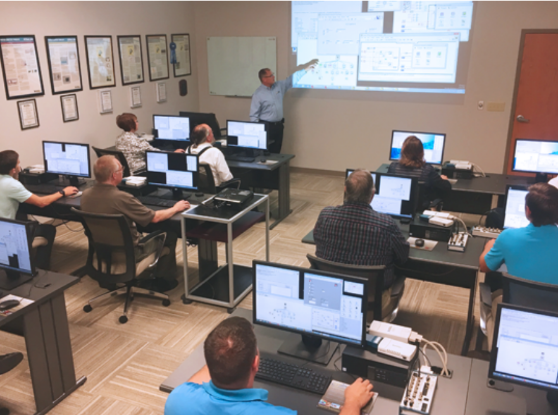What We Teach
DSA offers perfectly clear, instructor-led LabVIEW training courses taught by the most highly acclaimed Certified Professional Instructors nationwide. The intense, hands-on and seminar-based training options that we offer can be conducted at our regional Certified Training Centers, or on-site at our client locations. In either case, DSA provides all the necessary computers, peripherals, projectors, and software, data acquisition & instrumentation hardware, sensors, and student manuals, solution CDs, etc.
All classes are taught by degreed experts certified and deeply experienced in the course content.

Introductory Courses
LabVIEW™ Fundamentals Training is a robust curriculum taught by DSA’s certified experts, and is comparable to other introductory LabVIEW course offerings, designed to pick you up from little to no LabVIEW knowledge to full programming capacity. Beginning programmers will be exposed to some basic LabVIEW concepts and then start moving from small applications to increasingly larger ones.
Data Science Automation is holding LabVIEW courses at discounted rates for students, faculty, and staff members of an educational institution. Please call (724) 942-6330 to discuss pricing options, and inquire whether you are eligible for the Academic Discount.
LabVIEW Fundamentals
I
Three day course that covers the basics of programming and primitive data.
LabVIEW Fundamentals
II
Two day course that covers common design patterns, along with variables (caution), type definitions, and file I/O.
LabVIEW Fundamentals
I & II
Attend both LabVIEW Fundamentals I&II for cost savings.
FastTRAK Specialty Courses
FastTRAK was crafted to specifically resolve many past complaints with in-frequently scheduled and frequently cancelled specialty classes. In this model, DSA provides consultative, one-on-one, on-demand FastTRAK training options to replace low-demand, specialty courses, covering the same content but faster and sooner, and at the same advertised price.
- Participate alone or with other students from your own home.
- DSA Provides and expert coach.
- Schedule at your own convenience, at your place or ours.
- Shorter class commitments with out-of-class exercises.
- One on one training for personalized guidance.
Filter Courses
Software:
Type:
Level:
Clear Filters
Embedded Control & Monitoring
Machine Vision
Instrument Control
Performance
Connectivity
Advanced Architectures
Core 3
Fundamentals I
Fundamentals II
Fundamentals I
Fundamentals II
What We Recommend
Get started today and schedule a free consultation. Try us risk-free and learn how you can benefit from our methodical and certified best practices to advance your automation engineering and digital transformation initiatives.